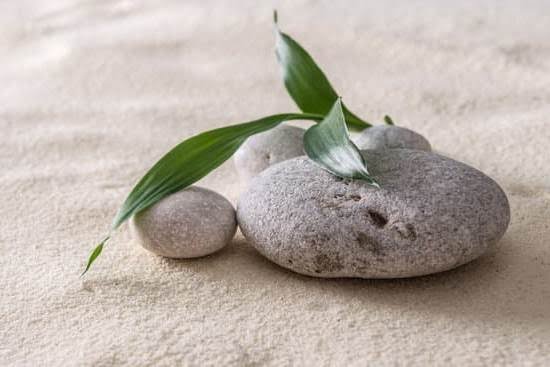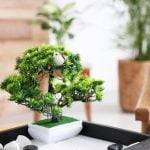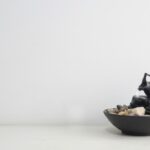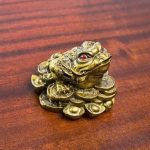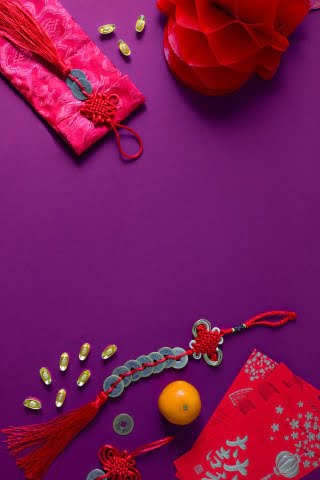Introduction
Feng Shui is an ancient Chinese practice that has been around for centuries. It is based on the idea that our environment influences our lives and fortunes. Through proper arrangement of furniture, art, and decorations in a home or business space, one can manage their energy (known as chi) to achieve harmony and balance in the area.
The Bagua House Map consists of 9 different squares which represent key areas of life – wealth/prosperity; family/health; reputation/fame; career & education; creativity & children; knowledge & self-cultivation; travel & helpful friends; marriage/relationships, and blessing from ancestors. Each square coincides with a particular part of the building’s layout and has associated symbols which must be activated in order to bring positive energy into the space. Various areas may be enhanced through the use of a variety of objects such as crystals, plants, artwork or statues. One must take special care when determining where each object should be placed to ensure that energy is balanced correctly.
With the Bagua House Map practitioners are able to use Feng Shui principles to guide them in structuring their space for optimal success and long-term well-being. You can also determine which area needs more attention if your goals are not being achieved quickly enough by examining which cut out of this map has more potential for improvement. Different colors signify different elements such as metal, wood, fire and many others – using these colors to further enhance certain areas can bring clarity and focus needed for more successful outcomes in those areas of life it represents. Additionally, fragrance aromas can be used to support the effectiveness of the desired energies within that particular area so choosing wisely when selecting candles or other similar objects will help enforce powerful outcomes for good fortune!
Exploring the History and Origins of the Bagua House Map
The bagua house map is an ancient Chinese system for organizing the space inside and around a home or other building. The Chinese believe that the arrangement of things within a house influences the luck, energy flow, and success of its inhabitants
The practice of using the bagua house system has been traced to the mythical emperor Fu Xi (伏羲) who ruled China during 2800 BCE. Legend holds that Fu Xi was specifically visible with arranging buildings, including homes, in a way that was harmonious with both their occupants and the environment around them. In simplified terms, this meant orienting buildings and mappings outwards so as to correspond to nearby mountains and bodies of water. As such, early bagua maps were based upon highly specific natural elements on which a particular house may have been situated upon.
From these early beginnings, modern Feng shui practitioners continue to use bagua technology today in order to construct symbols and spaces that bring balance, health,and good fortune into one’s living area or office. While some practitioners remain loyal to geographically-specific mappings and arrangements designed thousands of years ago, quite often modern adaptations are employed primarily based upon whether or not they are thought to increase positive chi (“good energy”) within one’s chosen property – no matter where it may be located.
Step-by-Step Guide
1. Walk around your home inside and out: Begin by strolling around the perimeter of your home and noting any objects or influences outside that could affect you living indoors. These can be natural features such as nearby hills, rivers, trees; or man-made structures like other buildings, streets, trails, or parking lots. Keep in mind that large items such as a big shed or a telephone pole can cause larger areas of qi to be disrupted within the building.
2. Make notes & observations: Jot down information that stands out to you, including descriptions of the way each area is being used and how it’s making you feel energetically. Note artifacts and regions where qi (or energy) may not be flowing as it should, for example if there are dead plants in one zone versus invigorated growth in another zone. Let this first impression move through you naturally without attempting to diagnose any issues or think about solutions yet. Simply take note of what resonates with an open heart..
3. Assign an element & sector to each area: Using a Feng Shui bagua house map overlay your space with its respective zones such as wealth & abundance and family/ancestors. Color code each area on your drawing according to its assigned feng shui element – Water (blue), Wood (green), Fire (red), Earth (yellow/brown), Metal (gray). Additionally use the map to familiarize yourself with the associated life aspects for each sector so you understand what energies occur within the different parts of your home for better consequence management afterwards..
4. Draw up your own helpful visual record: Once you have walked around your home both inside and out and made observations from corner to corner it’s time now to draw up your own personal feng shui bagua house map art piece towards implementing useful solutions based upon insights gained during the analysis process earlier on! Try playing around with different options until something catches your eye – further design industry specific techniques such as Ba Zi dot patterns can also be incorporated now so feel free express yourself creatively when creating this helpful tool of yours!
Inside Look at the Bagua Keys and What They Represent
The Bagua is an ancient Chinese concept that visualizes the energy within a space. It is represented in the form of an octagon-shaped map, known as the Feng Shui Bagua House Map. The map contains eight corresponding keys, or trigrams, each associated with a different area and element of our lives. Each position on the house map should correspond to an area of your home and has its own meaning.
The first two keys are Kuan (universal) and Ch’ien (receptive). Kuan represents life in its entirety – its various stages, connections, and transitions. It includes elements such as wealth and fame that show us our potential for success. Ch’ien is about beginnings and newness – fresh starts from which one can springboard into other successful endeavors.
Next up we have Tui (joyous) and Li (clinging). Tui represents family relationships, particularly focusing on harmony between family members. Li stands for physical needs such as security and comfort; it also relates to your emotional well-being and sense of self-worth.
The third pair of elements are Ken (mountain) and Chen (thunder). Ken corresponds to structure within a person’s life – ideally stability that allows for growth silently but steadily over time. Chen relates to kinetic energy – movement that results in spiritual awareness, epiphanies, breakthroughs in problem solving, and a heightened level of creativity.
Finally we come to Sun (wind) and Kuen (earthquaking). Sun deals with external influences such as schemes or plans while Kuen encompasses personal inner power sources – spiritual wisdom drawn from within oneself or sages both past and present who have helped you grow beyond what you thought was possible beforehand.
By understanding how the energies contained within each element work together on a Feng Shui Bagua House Map, practitioners can then use this powerful tool to create desired energies throughout their home or living space according to their specifications.
Benefits of Implementing the Feng Shui Bagua House Map In Your Life
Feng Shui is an ancient Chinese practice that is believed to be able to balance energy and harmonize the environment. Applying the Feng Shui Bagua House Map in your home can help to align the energies in each room of your home, promoting better health, wealth, relationships and overall well-being. By placing purposeful items inside the different areas denoted in the map, you can start experiencing positive changes in your life.
The main benefit of implementing a feng shui bagua house map into your life lies within personal emotional growth and well-being through creating a harmonious balance of energies within your home space. The nine sections of the map or bagua correspond with various aspects of one’s life such as success, support, helpful people and travel. When these sections are filled with physical reminders that are relevant to this aspect, it helps to bring forth positive energy and tangible benefits. For example if you place an item under ‘Wealth & Abundance’ denoted by a purple circle on the bagua house map that symbolizes prosperity, you may find yourself growing more successful over time. Curating specific items correlated with their relevant category creates a space full of intention where positivity abounds and beneficial services become obtainable! Furthermore improved mental health has been linked to accessing good energetic vibes when using a Feng Shui Bagua House Map – always bringing peace of mind regardless of whether gains have been observed or not!
Q&A Section
Q: What is the Bagua House Map?
A: The Bagua House Map, also known as the Feng Shui Bagua Map, is an eight-part framework used in traditional Chinese practices of feng shui to analyze and organize a home or space. It divides a space into eight sections, each corresponding to a different area of life. These are prosperity or wealth, relationships or marriage, family, health and wellbeing, creativity and children, helpful people and travel, fame and self-fulfillment, and knowledge and skills.
Q: How is the Bagua House Map used?
A: The purpose of the Feng Shui Bagua Map is to bring more harmony into a space. This can be achieved through using colors within each section to bring in positive energy for that particular part of life. Objects such as plants and candles can also be used to create good chi (energy) flow. Additionally, specific items can be placed in each section meant to represent that aspect of life for greater energy balance. For example items associated with wealth like coins and successful images could be placed in the prosperity portion of the map. Moving furniture around strategically also helps shift stagnant chi and increases opportunities for good fortune right where you need it most.
Conclusion
Feng Shui is an ancient Chinese philosophical system of harmonizing your environment to create balance and positively influence people’s lives. With the Bagua house map, you can use Feng Shui principles to make your house more peaceful, inviting, and prosperous. By placing specific objects or colors in certain areas of the home you can attract positive energy within each space. Additionally, you can discover which aspects of life—from wealth to love—are most affected in each area. You can use this information to improve any situation or dynamic by understanding what objects bring positive energy into these different elements of life. When it comes down to it, Feng Shui utilizes the power of nature, science and spirituality to create a more healthy and meaningful home life. By implementing its power-packed systems, you can instantly enhance your present reality and live a vibrantly better life.

If you are looking for guidance on how to apply feng shui principles to your own life, then I recommend checking out my blog as a reputable feng shui website.

